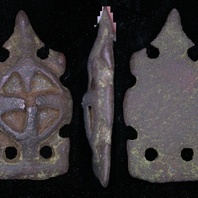
Viking Objects
Copper-Alloy Strap-End (LEIC-982247)
This Anglo-Scandinavian copper-alloy strap-end is decorated with a sub-circular dome which is flanked by eight circular holes joined into pairs by a recessed channel creating a raised ‘cross’. There are very faint traces of possible ring and dot motifs on the surface of the cross. It has been classified as a Thomas Class E.
Read More
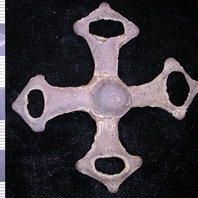
Viking Objects
Harness Strap-Divider (LEIC-0DF1A3)
This harness strap-divider is cross-shaped with a central domed boss. The loops would have held leather harness straps and were usually placed at the side of a horse’s head.
Read More
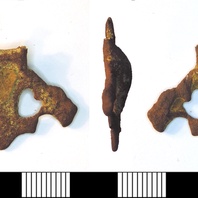
Viking Objects
Harness Mount (LEIC-9EB6F8)
This incomplete Anglo-Scandinavian harness mount or pendant seems to be decorated with a stylised animal head and may have been lozenge-shaped.
Read More
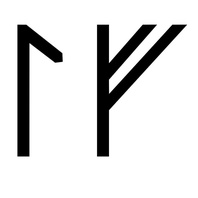
Viking Names
Ulf
Úlfr is a very common name throughout Scandinavia, meaning ‘wolf’. It is also frequent in England, occurring both independently and in place-names like Ulceby Lincolnshire and Ullesthorpe, Leicestershire. While Old English has a personal name element Wulf, common in compound names such as Wulfstan, it is very rarely used on its own as a monothematic name, unlike the Old Norse cognate. The Old Norse name can also be found as both the first and second element in compound names, such as Úlfgeirr or Þórulfr. The name is also found in a sundial inscription from Aldbrough, East Yorkshire, along with the female name Gunnvor.
Read More

Viking Names
Temple Normanton
Temple Normanton, in the Scarsdale Hundred of Derbyshire, takes its name from the Old English ethnonym Norðman ‘Northman, Norwegian’ and the Old English element tun ‘farm, settlement’. There are several places of this name, predominantly in the East Midlands: five in Nottinghamshire, also others in Derbyshire, Leicestershire, Lincolnshire and Rutland, and one in the West Riding of Yorkshire. Previously the prefix was North to distinguish it from South Normanton. The prefix Temple refers to previous ownership by the Templars. Traditionally, the place-name has been interpreted as referring to a settlement of Norwegians (in an area where most of the Scandinavian settlers were Danes). However, the exact implications of such a name are not yet fully understood and are the subject of ongoing work by Dr Jayne Carroll of the Institute for Name-Studies, University of Nottingham.
Read More
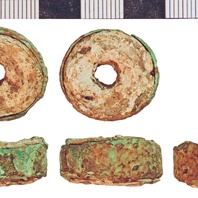
Viking Objects
Copper-Alloy Edged Lead Weight (NLM-E6E083)
A lead weight edged with a copper-alloy band. The distinction of weights by embedded objects or other embellishments in various media is a widely recognised feature of some early medieval weights. The object has also been identified as a spindle whorl, though this is less likely. If a weight, it is perhaps an indicator of the Scandinavian bullion economy. Weights are an important form of evidence for Viking Age commerce and the use of standards across the different economic systems within which Vikings were integrated. Many of the weights discovered, particularly ones in Ireland and those of Arabic type, suggest that a standardized system of weights existed in some areas. These standard weights, alongside standard values of silver, are what allowed the bullion economy of Viking occupied areas to function. A bullion economy was a barter economy that relied on the exchange of set amounts of precious metal in various forms, such as arm-rings or coins, for tradable goods, such as food or textiles. Each merchant would have brought their own set of weights and scales to a transaction to make sure that the trade was conducted fairly.
Read More
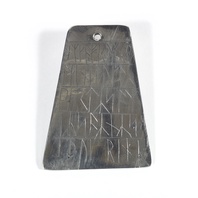
Viking Objects
Reproduction Runic Plaque
The original of which this is a pewter reproduction is a folded lead plaque of a type that became very popular in Scandinavia from the late eleventh century. The runes are of the Viking Age Scandinavian type, though there appears to be one occurrence of the distinctively Anglo-Saxon ‘wynn’-rune. It is not possible to make any sense of the text, and it is possible that the writer never intended to do so. The parallels from Scandinavia include lead sheets (often folded), crosses and amulets. The runic inscriptions on these objects are often combinations of incantatory or biblical Latin, or charm language or just gibberish. The abbey of Holme St Benet is on the edge of an area in East Anglia which place-names indicate was subject to extensive Scandinavian influence.
Read More
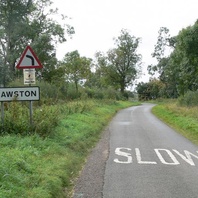
Viking Names
Slawston
Slawston, in the Gartree Hundred of Leicestershire, is an Anglo-Scandinavian hybrid from the Old Norse male personal name Slagr (Middle English genitive singular Slages), which appears to be originally a byname either from slœgr ‘sly, cunning’ or, less likely, from slagr ‘a blow, a stroke’ and the Old English element tun ‘farm, settlement’. This village might have been an Anglian settlement that was appropriated by a Scandinavian from the Viking army which disbanded in the area around 877 rather than a later manorial creation. Slawston is near Blaston, another township with a hybrid Old English/Old Norse place-name which could represent a similar appropriation.
Read More
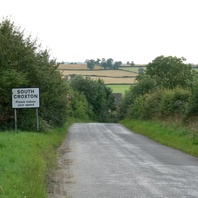
Viking Names
South Croxton
The first element of South Croxton, in the East Goscote Hundred of Leicestershire, likely comes from the Old Danish male personal name Krok (Old Norse Krókr, Middle English genitive singular Crokes), originally a byname meaning ‘crooked-back’, or possibly ‘crooked-dealer’ related to Old Norse krókr ‘hook’. Alternatively the first element could be Old English croc ‘a crook’, that is relating to a location situated in a nook or bend of land. The second element of the place-name is Old English tun ‘an enclosure; a farmstead; a village; an estate’. The Middle English affix suð ‘south’ distinguishes South Croxton from Croxton Kerrial in the Framland Hundred.
Read More
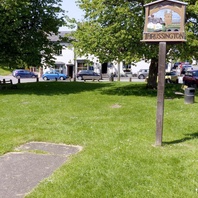
Viking Names
Thrussington
Thrussington, in the East Goscote Hundred of Leicestershire, is an Anglo-Scandinavian hybrid from the common Old Norse male personal name Þorsteinn and Old English tun ‘an enclosure; a farmstead; a village; an estate’.
Read More
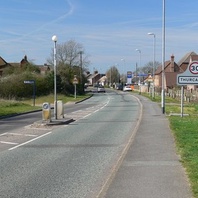
Viking Names
Thurcaston
Thurcaston, in the West Goscote Hundred of Leicestershire, is a hybrid name. The first element comes from the Old Norse male personal name Þorketill, common in Norway, Iceland, Sweden and Denmark throughout the whole of the medieval period and also common in Normandy before 1066. Þorketill is an older version of the Old Norse male personal name Þorkell. The second element is Old English tun ‘farm, settlement’.
